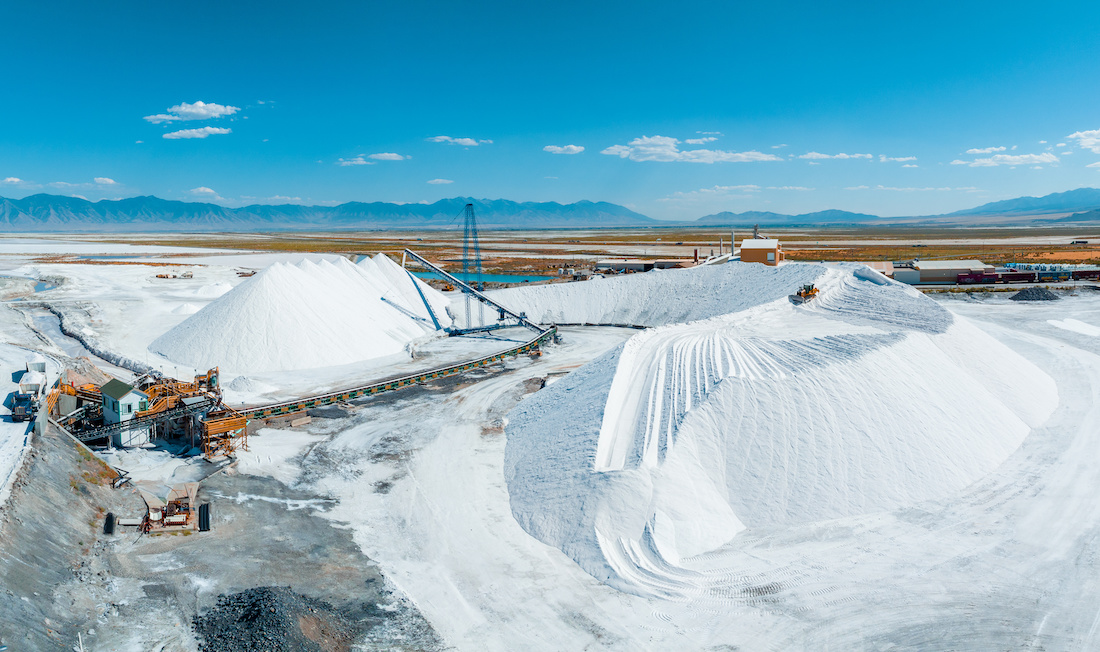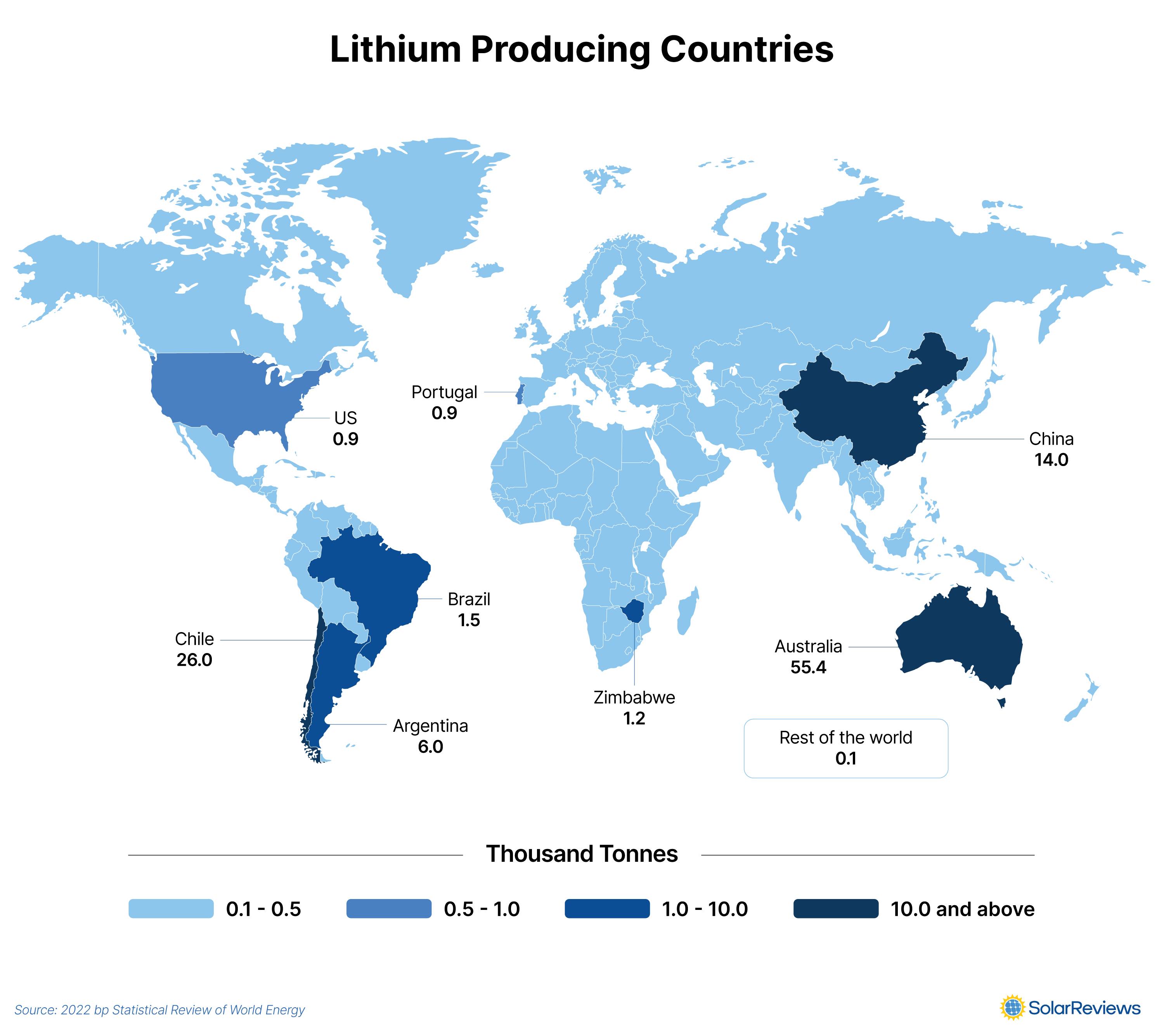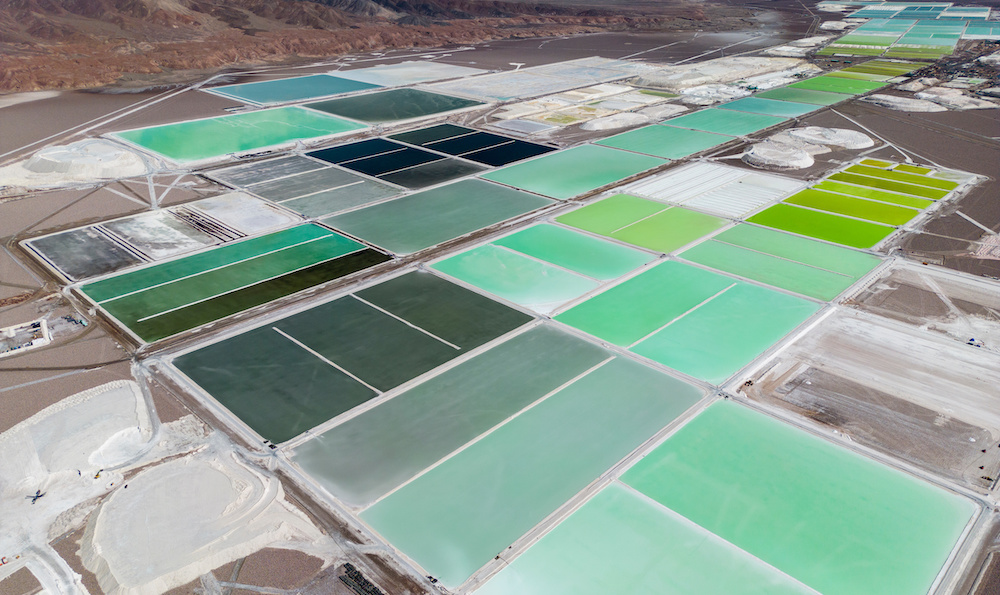Updated 1 year ago
Lithium mines in the United States: where mining stands today
Written by
Ana Almerini

Find out what lithium home batteries cost in your area
Lithium, an alkali metal, is essential for achieving a world powered by renewable energy.
Lithium is used in many electronics, from laptops and cell phones to electric car batteries and home energy storage. Yet, the United States is home to just one operating lithium mine. Some approved permits for new mines exist, but it will be years before they are operational — if they ever open at all.
Despite the U.S. having up to 9.1 million tons of lithium reserves, plans for new mines have stalled. Everything from cheaper import options to local opposition has put U.S. lithium mine construction on hold.
We’ll update you on the state of U.S. lithium mining and what we anticipate regarding lithium and climate change.
Key takeaways
-
Lithium is the critical element for lithium-ion storage and electric vehicle batteries, making it necessary for the transition to renewable energy sources.
-
Traditional lithium mining techniques use a lot of groundwater, take up large swaths of land, and emit carbon dioxide during the mining process.
-
The United States seeks to expand its lithium mining operations to ensure the critical mineral is easily accessible.
Where does lithium come from?
Lithium deposits are traditionally mined from rock and brine, a lithium-rich water. Another mining method is lithium water, a byproduct of geothermal heat plants. This can solve two problems at once by creating emissions-free geothermal energy and utilizing lithium simultaneously.
Lithium is a prolific alkali metal found worldwide and in the U.S. Some of the top countries for lithium are Australia, Chile, and China.

While mining for lithium is simple, specific mining methods can pollute fragile ecosystems.
Where is lithium mined in the U.S.?
The Albemarle Silver Peak Mine in Nevada is the only operating lithium mine in the United States. However, lithium is found all over the country, including states like North Carolina and California.
Plans to open more lithium mines in Nevada, California, and North Carolina will help the U.S. reach its goal of supplying lithium domestically and via strategic partners by 2030.
Lithium Mining and the Inflation Reduction Act. For electric vehicles to qualify for the full EV tax credit available from the Inflation Reduction Act, the battery components must use a certain percentage of critical minerals obtained within North America. The limited lithium mines in the U.S. can make it difficult to find batteries that can receive the full $7,500 tax credit, and increase the need for American mining operations.
How is lithium mined?

Image: freedom_wanted - stock.adobe.com
There are three main methods for mining lithium: brine extraction, filtering lithium-rich water, and traditional mining.
Brine extraction lithium mining
The Albermarle mine uses brine extraction to get lithium deposits from under the earth's surface. The brine is usually found below the surface of dry lake beds and in deserts.
The image above shows a typical brine extraction mine. In this mining method, brine is pumped up to the earth’s surface and spread across vast swaths of land to dry in the sun; the liquid evaporates and leaves lithium behind.
Lithium water mining
Lithium-rich water is a byproduct of geothermal energy production. Geothermal energy is created when hot, salty water is pumped to the surface. The water is then converted into steam that turns turbines to generate electricity using this heat.
This brine can then be repurposed, evaporating the water and leaving behind traces of lithium for other uses, like in a lithium battery.
Traditional lithium mining
Lithium is dug up and separated from the rock and crystal formations. This process involves crushing the rocks and using chemicals to separate out the lithium deposits.
Why do we need more lithium mines in the U.S.?
It takes a fair amount of time before raw lithium or lithium batteries reach the United States. Currently, the U.S. gets most of its lithium from South American and Australian salt flats.
Typically, the mined lithium is processed and turned into batteries in China. That's at least two more continents the lithium lands in before the final product is complete.
As the pandemic has taught us, a circuitous supply chain can lead to snags, such as long wait times or price increases. Plus, think of all the emissions released when shipping lithium between continents.
To combat this, the United States wants to increase the domestic production of lithium carbonate to avoid such issues in the future.
However, opening new lithium mines has not always been met with enthusiasm. There is the fear of pollution and pushback from native tribes whose sacred land would be tarnished.
Why is lithium important for the energy transition?
Lithium is a core component of lithium-ion batteries, which are the best batteries for powering the technology we use in our daily lives. Lithium-ion batteries are in cell phones, laptops, electric vehicles, and home energy storage systems.
Batteries will be essential as the world moves towards a renewable grid. Since the sun does not shine 24/7 and the wind does not always blow, batteries will be needed to keep energy on hand during times of low production.
There can be an energy imbalance during the sunniest parts of the day, when energy demand is low, and at night when energy use is typically more. Lithium-ion batteries can store excess energy during the day, which can then be utilized when renewable sources are not producing enough electricity for everyone to use.
Obviously, for lithium-ion batteries to work, we need lithium.
Are there alternatives to lithium mining?
Lithium is currently the best option for energy storage, electric vehicles, and other electronics. While there are alternatives for battery storage, like lead-acid and saltwater batteries, they aren’t as versatile as lithium, and some technologies aren’t as cost-effective.
Without lithium mines, we won't have a shot at building the battery storage required to make the grid fossil-fuel-free. Fortunately, scientists are working on other ways to increase the lithium supply, such as lithium recycling.
Current recycling methods rely on energy-intensive processes and acids to break down undesired parts of old batteries, but less energy-intensive recycling methods are being developed. In fact, some recycling processes can even improve the performance of recycled batteries.
Recycling is far from replacing mining, but once it can be scaled up, recycling lithium will be a crucial part of the lithium supply chain.
The unfortunate truth is that until recycling can be more manageable or alternatives to lithium mining or even lithium itself are available, mining for lithium is necessary for a sustainable future of clean energy.
Ana is the Marketing & Communications Manager at SolarReviews, working within the solar industry since 2020. With a Master's in Climate and Society and professional experience in marketing, she helps communicate the value of solar to homeowners and build awareness of the SolarReviews brand. On weekends you can find her at the Jersey shore, reading a book from the ever-increasing stack on her side table, or eating food someone else cooked....
Learn more about Ana Almerini